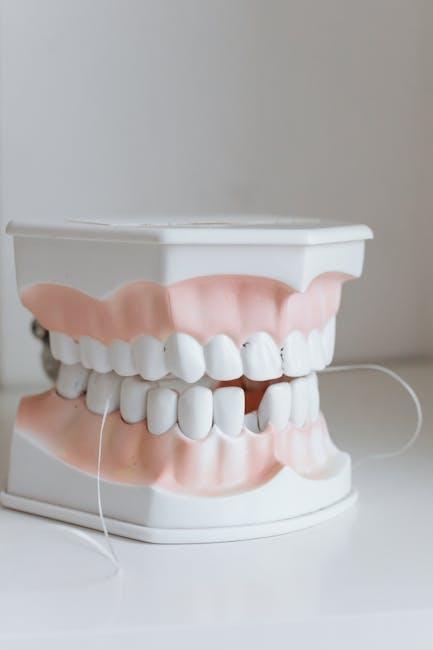Fluoride Ban Could Create Cavities For 1 Of Every 3 U.S. Kids – U.S. News & World Report
Recent discussions regarding the fluoride ban in various U.S. states have raised alarms among dental health experts and parents alike. According to a recent report by U.S. News & World Report, removing fluoride from community water supplies could lead to a surge in tooth decay, potentially causing cavities in one out of every three children across the country. This article dives deep into the implications of a fluoride ban, why fluoride is essential for kids’ oral health, and practical tips every parent should know to keep their kids’ smiles cavity-free.
Understanding Fluoride and Its Role in Oral Health
Fluoride is a naturally occurring mineral known for its protective effects against tooth decay. Since the mid-20th century, community water fluoridation has been hailed as one of the most effective public health measures for improving dental health at a population level.
- How fluoride works: It strengthens tooth enamel, making teeth more resistant to acid attacks from bacteria in plaque.
- Demographic benefits: Particularly beneficial among children, fluoride reduces the prevalence of cavities and helps maintain healthy oral bacteria balance.
- Safety and regulation: Fluoride levels in public water are carefully monitored to ensure safety and effectiveness.
The Potential Impact of a Fluoride Ban on U.S. Kids
A ban on fluoride could reverse decades of progress in dental public health, with consequences including:
- Increased incidence of cavities: Studies suggest that one in three U.S. children could develop additional cavities without fluoridated water.
- Higher medical costs: Treating dental decay often requires expensive procedures such as fillings, crowns, or even tooth extractions in severe cases.
- Widening health disparities: Fluoride ban disproportionately affects low-income families who may lack access to other dental preventive measures.
Key Statistics on Children’s Oral Health in the U.S.
| Statistic | Data |
|---|---|
| Children with cavities before fluoride ban | 1 in 5 (20%) |
| Projected children with cavities after fluoride ban | 1 in 3 (33%) |
| Average dental treatment cost per child | $500 – $1,500 annually |
| Percentage of low-income children lacking dental care | 30% |
Benefits of Fluoride in Preventing Cavities
The benefits of fluoride extend beyond just cavity prevention. Here are some notable advantages:
- Cost-effective public health intervention: Every $1 invested in water fluoridation saves $38 in dental treatment costs.
- Consistent protection: Fluoride in water provides continuous protection throughout the day, unlike topical treatments applied sporadically.
- Reduction of tooth decay severity: Fluoride not only reduces cavity incidence but also limits the progression of decay if it occurs.
- Supports overall child development: Healthy teeth help children eat well, speak clearly, and smile confidently, contributing to greater self-esteem and learning readiness.
Practical Tips for Protecting Your Child’s Dental Health During a Fluoride Ban
If fluoride use is restricted in your community, consider these strategies to help safeguard your child’s oral health:
- Use fluoride toothpaste: Choose kid-friendly fluoride toothpaste and help your child brush twice daily for two minutes.
- Consider fluoride supplements: Speak with your pediatric dentist or healthcare provider about fluoride tablets or rinses tailored to your child’s needs.
- Maintain a balanced diet: Limit sugary snacks and drinks, which fuel plaque-causing bacteria leading to cavities.
- Regular dental checkups: Schedule professional cleanings and exams every six months for early cavity detection and preventive care.
- Encourage water consumption: Ensure children drink plenty of water, preferably from safe, fluoridated sources if available.
Case Study: Impact of Fluoride Removal in a U.S. City
When a Midwestern city removed fluoride from its water supply in 2011, the consequences were significant and well-documented. Within five years:
- Dental decay rates among elementary school children rose by 27%.
- Fluoride-related dental visits dropped by 40%, but cavity treatment visits increased substantially.
- The city incurred an estimated $1.2 million increase in dental care costs due to the rise in preventable cavities.
Experts advised reinstating fluoride to curb the growing dental health crisis, underscoring fluoride’s critical role in community health.
Firsthand Experience: A Parent’s Perspective
Jennifer, a mother of two from a community currently debating fluoride removal, shares her concerns:
“Since we heard about the fluoride ban possibility, I’ve been worried about my kids. My dentist recommended extra fluoride toothpaste and supplements, but it feels like an uphill battle. It’s hard enough to keep up with brushing and healthy eating! I hope the community realizes how important fluoridated water is for keeping our kids’ teeth healthy.”
Conclusion
As the conversation around fluoride bans gains momentum in the U.S., it’s crucial to recognize the potentially devastating effects on children’s dental health. The prospect of cavities increasing to impact one-third of U.S. kids should be a wake-up call for policymakers, health professionals, and parents alike. While fluoride remains a proven, safe, and cost-effective tool in the fight against tooth decay, safeguarding children’s smiles requires community support, education, and proactive dental care strategies.
By understanding the science, benefits, and practical precautions surrounding fluoride, families can better navigate evolving public health landscapes – ensuring fewer cavities and more confident, healthy smiles for future generations.


